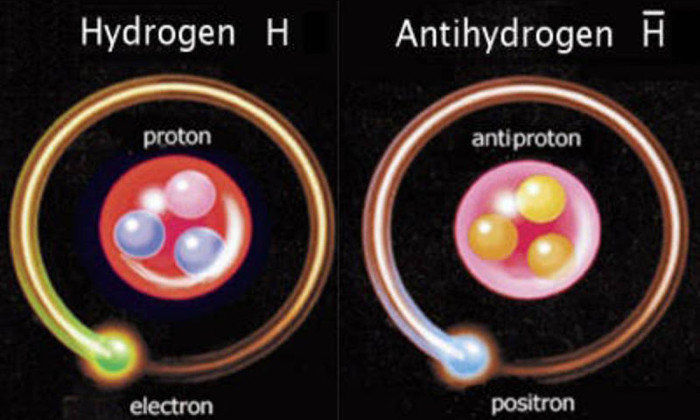The big mystery about antimatter is about to be explained
For the first time in two decades physicists at CERN measured the light emitted by an antimatter atom, proving the antiparticle of hydrogen was the mirror image of normal hydrogen.
Scientists can finally confirm predictions from physical laws of antimatter, according to Science Alert. This result opens up a new way of examining the physicist Albert Einstein's special theory of relativity, which explains one of the greatest mysteries of modern physics: "Why in the universe there is more physical matter than antimatter ? "
"This is a historic moment in decades of efforts to create antimatter and compare its properties with ordinary matter," said Alan Kostelecky , a theoretical physicist at Indiana University. .
The laws of physics predict that for every particle of matter there will usually be a corresponding antiparticle. Therefore, for each negative electron, there will be a positron with a positive charge. That means that with each hydrogen atom normally formed by an electron bound to a proton, there will be a hydrogen atom made up of an antineutone (or positron) bound to an antiproton.
If an antiparticle finds a particle of itself, they will cancel each other out, releasing energy in the form of light.
The fact that there are so many ordinary matter in the universe while it is hard to find antiparticles in nature. This can be explained by the antiparticle being annihilated by its own particles just before we can observe. However, the problem that confuses scientists is that the number of matter particles is higher than antimatter while modern physics models by Einstein in relativity predict the number of particles and antiparticles. by being born from the Big Bang.

Hydrogen atoms and anti-hydrogen atoms.(Photo: The Register).
"Something happened, leading to the current imbalance distribution, and we simply don't have an explanation right now , " said Jeffrey Hangst, a team member at ALPHA laboratory. .
According to the new results published in the November 29 issue of Nature, scientists can for the first time measure the spectrum of light emitted by an anti-hydrogen atom when excited by a laser, and compare it with the spectrum. light emitted by a common hydrogen atom.
As the most common atom in the universe, hydrogen always suppresses all its own antiparticles immediately and it is difficult to find hydrogen atoms in nature. Therefore, scientists need to create anti-hydrogen atoms in the laboratory.
For the past 20 years, the ALPHA research group of the European Nuclear Research Organization (CERN) has sought to create hydrogen atomic counterparts for research and development techniques that allow the creation of about 25,000 hydrogen atoms each 15 minutes, and trap about 14 of the 25,000 atomic counterparts to study. This was a major breakthrough when they could only trap 1 to 2 hydrogen atoms every 15 minutes.
These antiparticles are then excited by laser light to force the " positron " to jump from a low energy level to a higher energy level. After a short time, the positrons return to a lower energy level, the excess energy is converted into radiant light out.
When measuring radiant light, the researchers found that hydrogen atoms emit exactly the same light spectrum as ordinary hydrogen atoms. This result is consistent with the standard model of particle physics, predicting that hydrogen and anti-hydrogen will have identical spectra.
If all the spectra of different lasers for atoms and anti-atomic atoms end up in the same way, the team could prove Einstein's special theory of relativity still true.
- The researchers first successfully measured the color of antimatter
- Antimatter bomb - A million-billion-dollar destructive weapon
- What is antimatter?
- The mystery of antimatter is about to be decoded
- Explore the antimatter spacecraft of the future
- Physicists plan to seek antimatter
- The antimatter ring surrounds the earth
- Explain antimatter from the perspective of modern physics
- Uncontrolled antimatter explodes star clusters
- Scientists create matter and antimatter by light
- Particle counting machine on the International Space Station
- Medical mysteries have not been explained
 'Fine laughs' - Scary and painful torture in ancient times
'Fine laughs' - Scary and painful torture in ancient times The sequence of numbers 142857 of the Egyptian pyramids is known as the strangest number in the world - Why?
The sequence of numbers 142857 of the Egyptian pyramids is known as the strangest number in the world - Why? History of the iron
History of the iron What is alum?
What is alum?